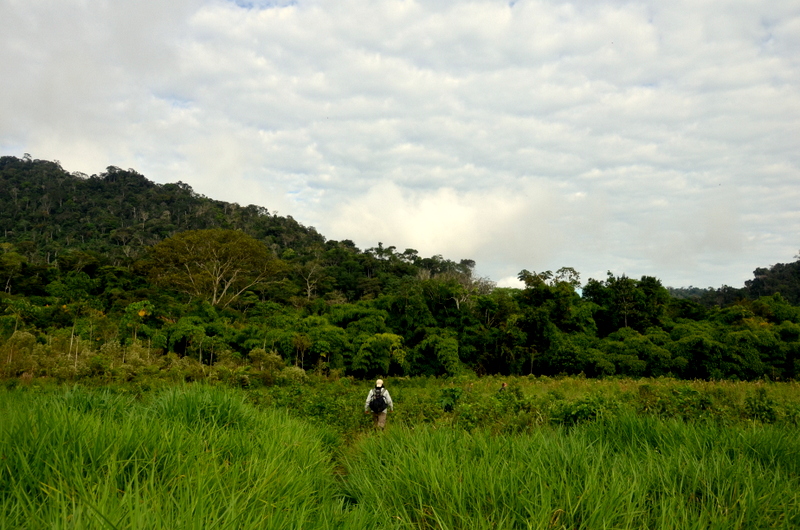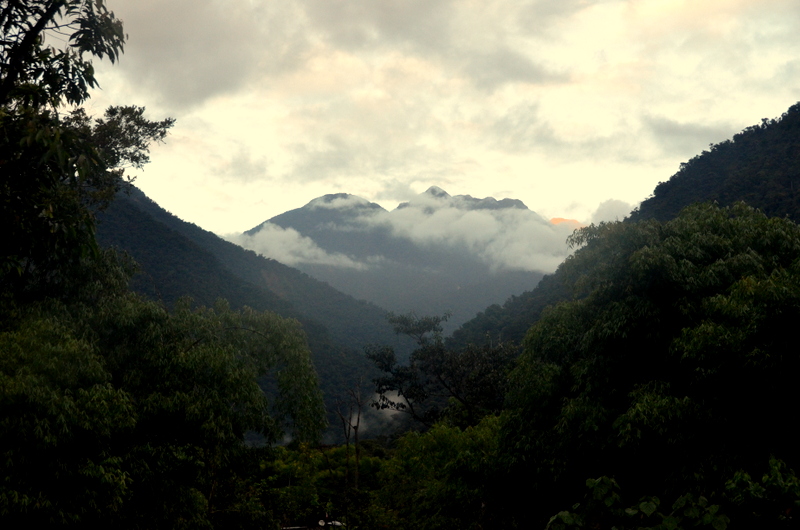
A cruel irony of climate change is that countries that ring the equator – most of them poor and eager to develop – possess an incredibly valuable asset that they can only monetize if they destroy it: their tropical forests.
These vast forests and their lung-like functions absorb carbon spewed in industrialized countries. They produce clouds that regulate global weather and temperatures. They slow the rate of global warming. They shelter much of the world's biodiversity. And they provide these vital, irreplaceable services to the planet for free.
Often, though, these forests sit atop lucrative troves of fossil fuels or minerals. Or they cover land that when cleared can be used for ranching and farming. What's a developing country, eager to leverage its natural resources, to do?
I was in Peru for more than two weeks last summer, reporting on the impact of rising temperatures on tropical forests. In Lima, I spoke with environmental officials who understand this irony intrinsically. Peru has the world's fourth-largest store of tropical forests (behind Brazil, the Congo and Indonesia). Pressure from the mining and ranching industries there to develop that land is intense.
"Yes, there is great pressure," Carlos Loret De Mola, who advises Peru's minister of the environment, told me. "But we cannot have the extractive industries working in the way that was done in the 20th century. We have to do it in a different way. We have to keep our ecosystems alive."
As representatives from more than 190 countries meet in Warsaw over the next two weeks for the annual U.N. climate negotiations, a contentious and controversial issue under discussion, and one to be watched closely by countries like Peru, will be whether this irony can be effectively addressed through REDD.
REDD is the slow-moving, decade-old U.N. program of "reducing emissions from deforestation and forest degradation."
"Developing countries are asking: will REDD compensate us for opportunity costs and provide the economic growth we need to get out of poverty?" Chris Meyer, an expert on REDD from the Environmental Defense Fund in Washington, D.C., told me before leaving for Poland. "Can we change the power dynamic with this REDD mechanism to promote forest conservation?"
There are obstacles to this approach, which we'll get to later. But first, Meyer suggested one way it can work, using Peru as an example.
"Illegal gold mining is contributing to Peru losing a half-percent of its forests each year," Meyer explained. "Let's say they send out rangers to cut back on that mining and reduce deforestation to one-tenth of 1 percent. That difference amounts to Peru's commitment to REDD. It can then register the amount of forest saved and sell it in the future as a carbon offset to a developed country."
In Peru, I discussed REDD at length with Sassan Saatchi, a senior scientist with NASA's Jet Propulsion Laboratory at the California Institute of Technology. His satellite imaging and fly-overs of Peru are helping to determine the amount of carbon stored in the country's tropical forests.
Saatchi told me that when the emerging market for carbon offsets is established, "if you have so many billions of tons of carbon stored in your forests, suddenly for a country like Peru, that becomes an asset like Saudi Arabia's oil money."
That's the promise of REDD. Tropical countries, whose forests provide global environmental services for free, receive fair-market compensation from developed countries who need to meet carbon emissions caps. Advocates like Meyer argue that if we stand a chance at slowing rising temperatures, REDD-regulated carbon offset programs need to gain momentum in Warsaw as part of a comprehensive international strategy to fight climate change.
"REDD is maturing and growing," Meyer said, noting that Norway, the United Kingdom, the United States and Germany have collectively pledged several billion dollars to a variety of REDD-related projects. "In the next two years, hopefully we'll finalize international rules that will guide countries. We are getting to the point where there are billions in the program. But if we can't get demand, all this money to generate supply is going to go nowhere."
Meyer's mention of two years is significant. The same countries meeting now in Warsaw will reconvene in Paris in 2015 to conclude a global agreement to combat climate change. That agreement is to take effect in 2020.
Now to those obstacles, which are myriad, and range from difficult to intractable. Here are just a few:
• Some environmentalists oppose any market approach to addressing climate change, arguing that heavy-polluting countries need to reduce their emissions, period, and not be enabled to skirt that responsibility by buying carbon offsets in other countries.
• "Verification is a big thing," Meyer said. Brazil, which has been close to concluding a REDD-related deal with Norway, is resisting third-party verification of its conservation claims. Norway has countered that if it's going to invest substantially in carbon offsets, it wants to be certain the offsets are in place and lasting.
• As The Economist reported on this subject, "avoided deforestation may not be permanent — especially where there is a risk of climate-induced forest dieback. Another (obstacle) is that REDD money will inevitably flow to the most egregious deforesters, such as Indonesia, which may create an incentive for others to take up their chainsaws."
Meanwhile, in Peru, the government appears both committed to tropical-forest conservation and helpless to stop the pervasive deforestation now taking place in the Amazon basin from illegal gold mining. Clearly, Peru could use some assistance from international programs like REDD.
"Sixty percent of our country is in forests," Ernesto Raez-Lund, an adviser to the minister to the environment, told me in Lima. "This is a great asset, it's a global asset. And it's for us to take care of."




